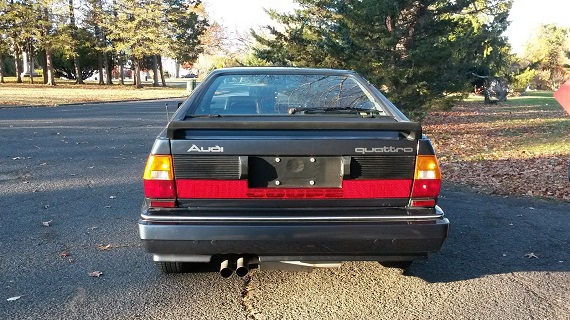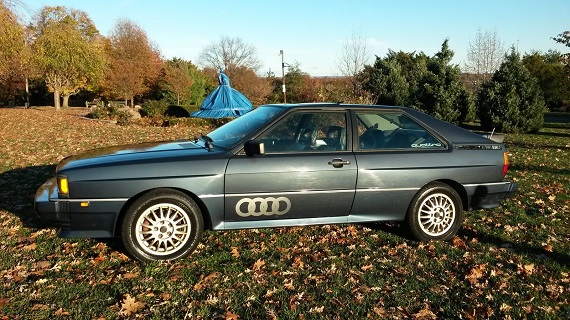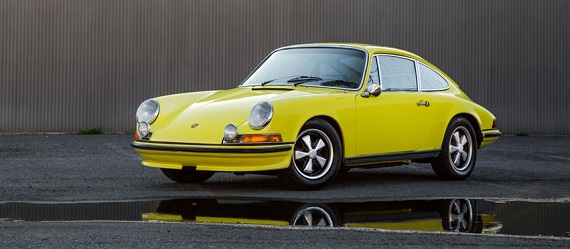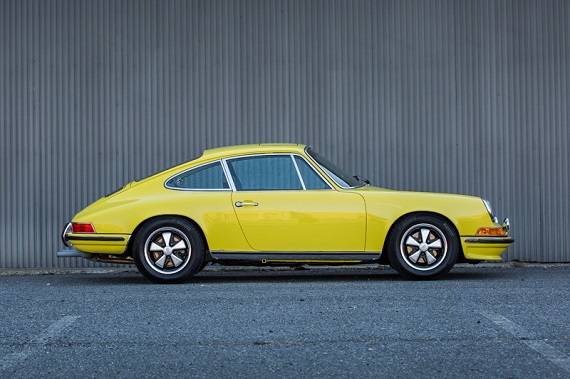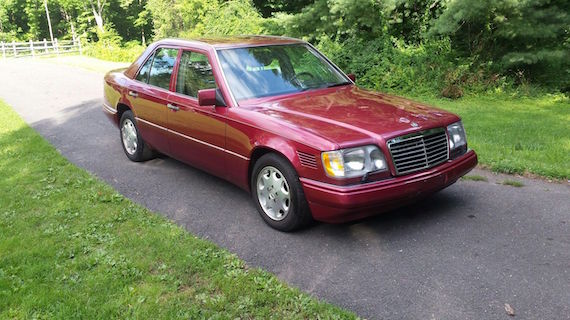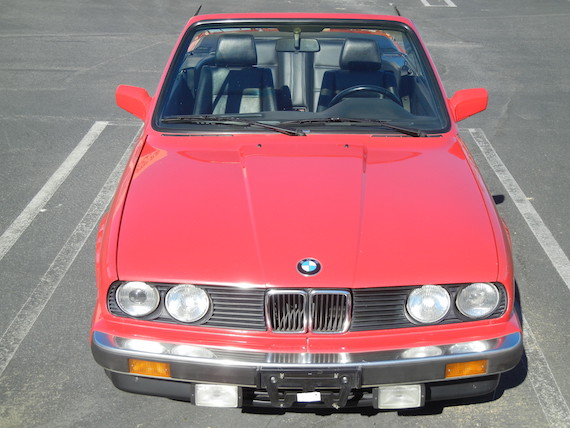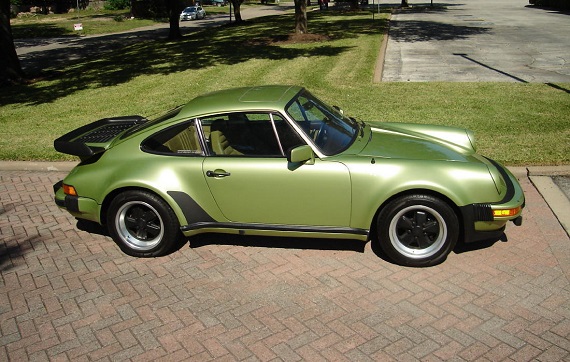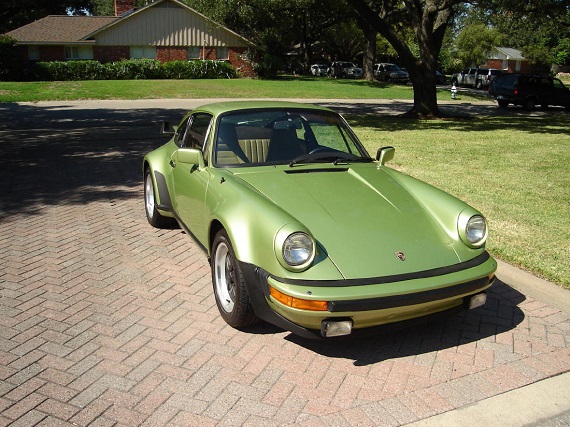Considering what it takes to be called a supercar these days, it’s somewhat amazing that in the early 1980s the Audi Quattro sparked such a revolution. After all, the boxflared wonder arrived in the U.S. costing about the same as a Porsche 911 but sporting only 160 horsepower. Factor in the relatively heavy for then (though admittedly light by today’s standards) 3,000 lb curb weight, and the Quattro was anything but high performance by the standards we consider today. But a revolution in performance it was, as it allowed you to push the car hard in any condition with confidence. Recently I watched the old Motorweek clip on the Quattro; performance was about what you’d expect from the numbers presented above and is probably on par with a base Honda Civic these days. But still the reviewers raved about the performance of the luxury coupe, and though few sold on these shores they’ve always enjoyed a cult following which today is growing into a greater appreciation:
German Cars For Sale Blog Posts
For most of us, the reason we read these pages – or write for them – comes from a certain passion for driving. Some may be in search of interesting cars for a collection, but even collectors began their hobby from that basic foundation of a love of cars. The desire for vintage cars then stems from a nostalgic longing for an idol from our youth, or a driving experience that is more analog, connected, and human. Or just a mixture of all of these things. No matter what the cause we always return to driving itself and vintage cars can raise an impediment: price. There is a price for nostalgia. Limited remaining supply mean that few vintage cars are cheap and all will need, or will have had, extensive work either to keep them in good condition or return them to good condition. For those of us who are fans of the 911, the iconic stature of the car itself raises those costs in every regard and for most the cost becomes prohibitive. But if you must have all the beauty of that original design married to the lightness and simplicity found in most any vintage automobile, then you’ve got to find a way around these problems of cost. The 911 we see here I think offers some nice possibilities, though given that it appears to be in turn-key condition the bidding has come up to a point where we’d hardly consider it inexpensive. Still, it has promise. Here we have a Light Yellow over Black 1971 Porsche 911T Sunroof Coupe, located in Philadelphia, with 80,959 miles on it.
CLICK FOR DETAILS: 1971 Porsche 911T Coupe on eBay
2 CommentsNow that the chatter has died down a bit about the Volkswagen emission scandal, perhaps us fans of the oil burner will get to enjoy our hobby without the ire from other motorists. One of my favorites from the last two decades was the late model W124 Mercedes-Benz E300 Diesel. Other than a small badge on the trunk, the only thing to differentiate this E-class from the petrol powered E320 would be the vents on the right front fender, a method of drawing cool air in versus using the preheated underhood air. This E300 for sale in Connecticut is celebrating it’s 20th birthday, looking rather fresh for its mileage. Admittedly, for a diesel Mercedes of this vintage, it is just hitting its stride.
Click for details: 1995 Mercedes-Benz E300 Diesel on eBay
2 CommentsIt might not be the exact time of year one thinks of buying a convertible, but those of us living on the east coast of the United States experienced a bit of a warm snap in November. A welcome relief for those of us used to dealing with piles of snow. Time to buy a drop top, then? Maybe. If it’s a bit of the 1980s you’re looking to revisit, it doesn’t get much better than the iconic BMW E30 Convertible. This 1988 325i Convertible for sale in California is mostly original, looking sharp in the popular Zinnoberot over black leather, mated to what many consider to be one of the smoothest manual gearboxes in the business.
Click for details: 1988 BMW 325i Convertible on eBay
1 CommentDo you like apples? No, this isn’t a Good Will Hunting joke. The color combination on this 1979 Porsche 930 reminds me very much of a green apple. It’s a bit more jolly rancher green than actual green apple green, but still that’s what comes to mind. Is that a good thing? Well, that takes us back to the question at the beginning. It’s definitely unique and I do think I prefer the tan over a black interior, which is probably more common with this sort of exterior color, but I think I’d need to see it in person to really get a good sense of how everything works together. For the 1978 model year Porsche increased the displacement of the 930’s engine from 3.0 liters to 3.3 liters and added an air-to-air intercooler, easily identifiable by the change in profile of the rear spoiler, which gave the 930 a nice bump in power – up 20 hp to 265 hp on US models. Perhaps of most significance here, 1979 was the last year the 930 would be available in the US until it was reintroduced in 1986. That tends to make them in higher demand than some of the later models, though not nearly as much so as the early 3.0 liter models.
